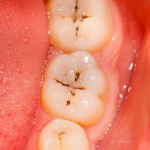
Seven RCTs were included in this review of of micro-invasive interventions for non-cavitated proximal caries suggesting that resin infiltration is effective in arresting caries progression.
[read the full story...]
Seven RCTs were included in this review of of micro-invasive interventions for non-cavitated proximal caries suggesting that resin infiltration is effective in arresting caries progression.
[read the full story...]
9 RCTs were included in this review of resin infiltration for the clinical management of early non-cavitated proximal caries lesions. The findings indicate that resin infiltration when combined with oral hygiene measures was promising and more effective than oral hygiene measures alone.
[read the full story...]
This network meta-analysis included 14 studies (10 RCTs) and suggests that minimally invasive strategies would rank first followed by micro invasive approaches to pit and fissure caries. However, for some comparisons only a few studies are available and then are generally small and with short follow up periods.
[read the full story...]
There is increasing interest in non-surgical approaches to the management of dental caries to preserve tooth structure. The aim of this study was to compare the effect of infiltrating vs. sealing proximal caries lesions against placebo after 3 years. The study was a split mouth design conducted in young adults in Colombia. Individuals with 3 [read the full story…]